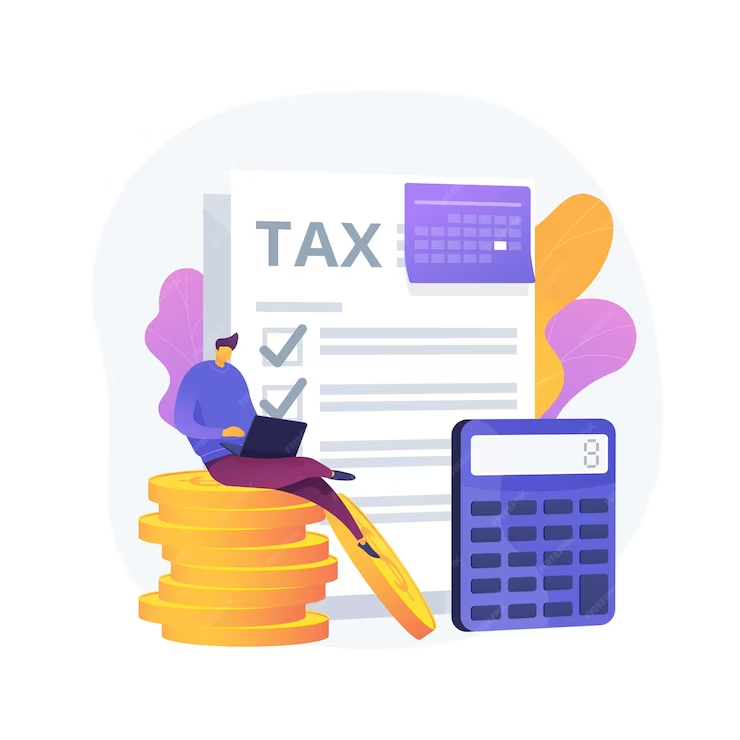ITC Rules for Capital Goods under GST
- 20 Sep 24
- 13 mins
ITC Rules for Capital Goods under GST
- What Are Capital Goods?
- Difference Between Capital Goods and Other Inputs
- What Is Credit on Capital Goods?
- What Is Common Credit?
- Why Is Common Credit Important?
- Types of ITC for Capital Items
- What Happens if One Starts Using an Asset for Exempt Goods Also for Taxable Goods?
- Who Can Claim Input Tax Credit Under GST?
- Conditions to Claim an Input Tax Credit Under GST
- Time Limit to Claim Input Tax Credit Under GST
- How to Claim an Input Tax Credit Under GST?
- Conclusion
Key Takeaways
- Capital goods like machinery and equipment are eligible for ITC under GST, helping businesses reduce their tax burden on such investments.
- ITC on capital goods is claimable only if depreciation on the GST component is not availed.
- Common credit applies when capital goods are used for both taxable and exempt supplies, requiring careful calculation to avoid errors.
- Timely filing of GSTR-3B with accurate ITC details is essential to claim the tax credit and avoid penalties.
- Capital goods sent for job work must be returned within three years to maintain ITC eligibility.
Input Tax Credit can be claimed on capital goods under the Goods and Services Tax regime. By bringing capital goods under GST, the Government has aimed to reduce the tax burden on business operators.
Being a registered taxpayer, you must claim ITC upon buying input raw materials as these will be used for the furtherance of business. Thus, it is essential to offset the initially paid GST while procuring these materials to avoid paying tax on the same supplies twice. In this guide, we will mostly discuss ITC-related claim rules surrounding the supply of capital goods as per the GST Act.
What Are Capital Goods?

Capital goods represent various business assets like equipment, machinery, vehicles, plants and other tools that the company would require to produce taxable supplies. For instance, an engine hoist machine used in a garage is a capital asset for the car workshop operator.
Difference Between Capital Goods and Other Inputs
To figure out the difference between the sale of capital goods and other inputs, let us look at an example.
Suppose, you own a restaurant. Let’s say the ingredients required to make a specific dish include dairy, vegetables, spices, meat, and grains. These items are all inputs for the final meal sold to a customer. Hence, they help generate revenue but are consumed when the final product is served. Thus, you consider the ingredients to be business expenses.
On the other hand, suppose a stove is being used to prepare the dish. It is a resource that cannot be completely considered as an expense or in this sense as ‘inputs’ as they do not get consumed within the year of purchase. Therefore, it is a capital good that depreciates over time. All business operators consider this part of the cost each year through accounting methods such as depreciation, amortisation, and depletion.
What Is Credit on Capital Goods?
While purchasing any product or service, the buyer needs to pay a specific GST amount towards it. Later, they can claim an Input Tax Credit on the GST that they have already paid.
As discussed above, any registered person who decides to initiate the sale of capital goods for their business they are liable to pay the applicable GST. Later on, they can claim the tax amount as credit in the same way as they would have followed for other inputs.
However, please note that if you claim depreciation on a capital asset's GST component when bringing it into business premises, you become ineligible to claim Input Tax Credit (ITC).
What Is Common Credit?
A company may procure input commodities, services and capital goods from various outside sources. Subsequently, these resources may be used either for personal or business-related causes. Under the GST Act, the aggregate ITC applicable on all these transactions is denoted as Common Credit or Proportionate Credit.
In the above-mentioned scenario, any taxpayer will not be eligible to claim ITC for inputs if those are utilised for personal reasons. Hence, the common credit norm will be applicable partially while settling the production tax liability.
In addition, ITC claims are now only considered valid when a particular transaction category appears under GSTR-3B. Therefore, taxpayers can no longer claim the 5% provisional ITC under CGST Rule 36(4) and must ensure that every ITC value claimed is accurately reflected in their GSTR-3B.
Why Is Common Credit Important?
ITC claims are only considered for business-related transactions. However, many traders tend to utilise similar inputs for both their commercial and personal needs. This directly breaches the GST Act as no one is allowed to claim tax benefits for personal expenses.
Again, goods exempted under GST already enjoy 0% GST. You are not supposed to claim ITC for exempted supplies as that leads to negative taxation.
The following types of ITC for capital goods will help calculate the common credit applicable to personal and exempted supplies. It helps evaluate the credit that you can claim for reversal while filing GSTR-3B.
Types of ITC for Capital Items
To gain detailed insights, consider understanding each case one by one:

Capital Goods Used Only for Personal Purposes or For Exempted Sales
The Government does not allow ITC claims on personal purchases as well as for capital goods involved in exempted sales. A taxable person has to indicate these specifications in GSTR-3B and they must not add them to the electronic credit ledger.
Example 1: Personal Transaction
Ms. XYZ buys a microwave oven that she does not need for her business purposes. As it automatically falls under her personal purchases, thus she cannot claim ITC on the GST furnished for the oven.
Example 2: Capital Acquisition for Exempted Sales
Mr. ZYX buys a power loom for his silk factory that would be necessary to spin the silk yarns. As his plant caters to various wholesalers and as he is producing raw silk (exempted from GST), he cannot claim an input tax credit on the GST paid for the inputs as well as capital goods.
Common Credit for Partly Personal/ Exempted and Partly Normal Sales
When the concerned resources are meant for partly personal and partly normal sales, the below-mentioned regulations are followed:
- ITC already paid for the capital goods are credited to the electronic credit ledger
- The useful life of these capital goods is considered to be 5 years from the date of their purchase
- Finally, the cumulative ITC reverted to the credit ledger for the whole useful life is spread over the entire span
Considering that you are a monthly GST settler, the ITC for 1 month will be:
Input Tax Credit per Month = ITC Credited to Electronic Credit Ledger/ 60*(5 years * 12 months)
In the above formula, the useful life of the capital assets has been considered as 5 years.
Calculations for Common Credit for Exempted Supplies
By applying the formula given below, you can figure out the input tax credit attributable to exempt products and services out of common capital credit:
Credit involving GST-exempt items = Value of exempt supplies/ Cumulative Turnover * Credit for a tax cycle
The remaining value after subtracting credit for exempt supplies is considered a valid ITC. The formulae mentioned above must be applied separately for the calculation of these parameters:
- State Tax
- Central Tax
- Union Territory Tax
- Integrated Tax
What Happens if One Starts Using an Asset for Exempt Goods Also for Taxable Goods?
In the scenario where you had previously possessed a capital good for personal reasons or for producing exempted goods but now you will utilise it for business purposes involving taxable supplies, the input tax that should be credited to your electronic credit ledger is:
Input tax – 5% of input tax for each quarter or part thereof from the date of billing
Here’s a quick example to clear out the idea:
Mr. ABC purchased a capital good to use for producing exempt supplies only. Meanwhile, he had paid ₹27,000 as input tax along with ₹1,50,000 (the price of the capital asset) on 1st August, 2022. On 15th September, 2023, he decided to involve the capital asset in the production of both exempt and taxable supplies.
In this case, the eligible common input tax will be:
Input tax – 5% of input tax for each quarter or part thereof from the date of billing
Here the number of months between Mr. ABC's change in decision is 5 months.
Thus, 27,000 - (5% of 27,000) * 5 quarters = 27,000 - 6,750 = 20,250
Now, this amount, i.e., ₹20,250 is the common credit made available for Mr. ABC. Consequently, he will credit this balance to his credit ledger to effectively find out the ITC attributable to exempt products and services.
Hence, his monthly common credit will be ₹(20,250/60) = ₹337.50.
Now assuming Mr. ABC’s total turnover is ₹200 lakh and exempted sales is ₹50 lakh, the credit attributable for exempt supplies would be:
Credit for exempt supplies = Value of exempt supplies/ Total turnover * Common credit for the month
Credit for exempt supplies = 50/ 200 * 337.50 = ₹84
Therefore, ₹84 will be reversed in Mr. ABC's GSTR-3B under the ITC Reversal column.
Reversal of Credit Under Certain Circumstances

During the following instances, the common credit is reversed. In other words, the eligible taxpayer can see the proportionate ITC added to output tax under GSTR-3B when:
- A regular taxpayer switches to the composition scheme or when their goods/services become exempt.
- Any business owner's GST registration is cancelled.
- Transactions have taken place to acquire capital goods on which input tax had been previously charged.
ITC concerning the capital asset's remaining useful life needs to be evaluated as per pro-rata structure where the useful life is considered to be 5 years.
Capital Goods Send on Job Work Activities
ITC is attributed to the primary manufacturer when the capital goods produced by them are being utilised by a job worker to fulfil business needs.
Quite importantly, such goods need to be retracted within 3 years of allowing workers to use them. Following this rule, these supplies are tagged under the deemed supply category that becomes effective from the date of sending the supplies. Finally, the tax must be paid on these resources and late payment will attract additional interest.
Who Can Claim Input Tax Credit Under GST?
Any registered taxpayer can initiate ITC claims on the inward supply of taxable services and products. You can check personal eligibility criteria by using a dependable GST calculator online.
These instances enable you to claim ITC under GST:
- Possession of tax bills: There has to be a valid tax-paying invoice with the concerned person.
- Receipt of supplies: Credit reversal can be requested by the taxpayer only when they have received goods and services.
- Meeting the return: The registered personnel must furnish an adequate return to claim the ITC.
- Lot-based eligible entity: When a person or business receives inputs in lots, they can initiate ITC claims only after the final lot has arrived.
In addition to the above regulations, the credit recipient should settle all outstanding bills towards its suppliers within 180 days from the invoice date. If you fail to meet this requirement, an extra credit amount is reflected under the output tax amount along with interest.
Conditions to Claim an Input Tax Credit Under GST
These criteria are to be fulfilled to claim an ITC under the GST regime:
- The registered taxpayer must already receive the goods mentioned in the bill and must furnish applicable GST at the time of purchase.
- When inputs come in lots, ITC is to be claimed after receiving the final lot.
- When payments do not reach the concerned suppliers, the amount equivalent to the input tax credit is added to the ITC claimant’s output tax liability.
- ITC is not applicable if you have already claimed depreciation on the capital goods’ tax part. This regulation is as per the Income Tax Act, of 1961.
- One must follow the deadline published by GST provisions while filing the ITC returns.
In the end, specific items are not listed under ITC claims as per CGST Act's Section 17(5). Therefore, you cannot avail tax advantages on purchasing these blocked credits.
Time Limit to Claim Input Tax Credit Under GST

The deadline for filing ITC returns on inputs and capital goods under GST is before the below-mentioned two dates:
- The last date of filing the annual return for that particular fiscal year
- 30th November of the upcoming financial year
For example, if you are a registered taxpayer aiming to claim an ITC for the FY 2023-24, make sure to do it prior to issuing the 30th November 2024 or filing the 2023-24 yearly return, whichever comes first.
How to Claim an Input Tax Credit Under GST?
To claim ITC, please follow these steps:
Step 1: Issue the GSTR-3B to file a monthly return. It specifies your input tax credit details and the net output tax liability.
Step 2: Cross-check the ITC particulars based on the data filed by your suppliers.
Step 3: Avoid discrepancies and if you find any, adjust them in the next month’s return.
Step 4: Make sure to pay all outstanding credit, in addition to the interest levied, before the deadline.
Conclusion
Figuring out the claim rules for filing tax returns on capital goods under GST is a crucial step in complying with overall tax norms. Having detailed clarity in this matter allows business owners to smoothly navigate through the challenges and uncertainties that arise during expansion or mergers.
Thus, you can consider keeping this guide handy as it thoroughly explains the key compliance measures that come under ITC claims.
💡If you want to pay your GST with Credit Card, then download Pice Business Payment App. Pice is the one stop app for paying all your business expenses.
FAQs
 By
By 















